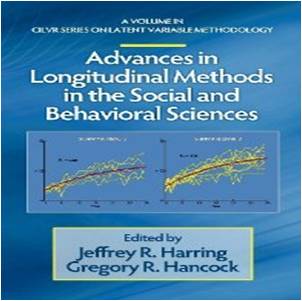Jeffrey R. Harring & Gregory R. Hancock (Eds.)
2012, Information Age Publishing
This volume is a resource intended for advanced graduate students, faculty, and applied researchers interested in longitudinal data analysis, especially in the social and behavioral sciences. The chapters are written by established methodological researchers from
diverse research domains such as psychology, biostatistics, educational statistics, psychometrics, and family sciences. Each chapter exposes the reader
to some of the latest methodological developments and perspectives in the analysis of longitudinal data, and is written in a didactic tone that makes the
content accessible to the broader research community. Part I, MODELING LONGITUDINAL DATA: EXAMINING FACETS
OF CHANGE OR VARIABILITY. Part II, DRAWING VALID INFERENCES:
LONGITUDINAL DESIGN CONSIDERATIONS AND MODEL ASSUMPTIONS. Part III, THE ROLE OF MEASUREMENT IN MODELING WITHIN-SUBJECT AND BETWEEN-SUBJECT EFFECTS.
LONGITUDINAL DESIGN CONSIDERATIONS AND MODEL ASSUMPTIONS. Part III, THE ROLE OF MEASUREMENT IN MODELING WITHIN-SUBJECT AND BETWEEN-SUBJECT EFFECTS.
